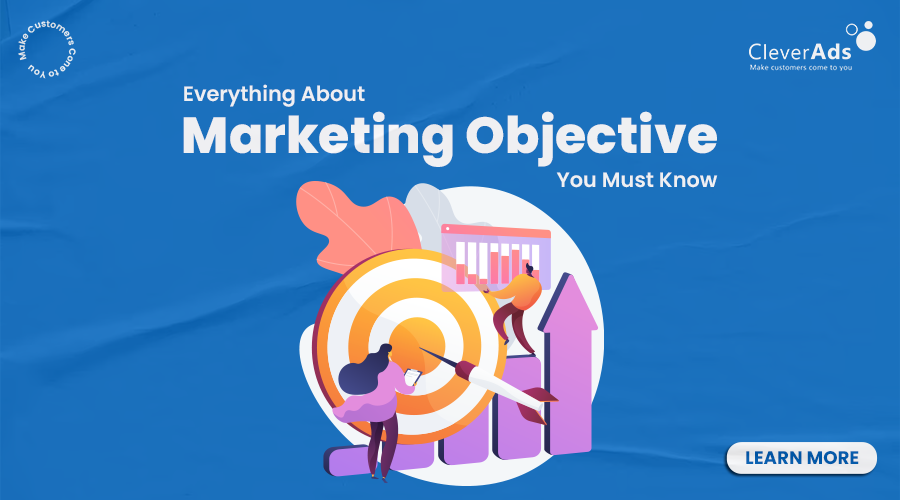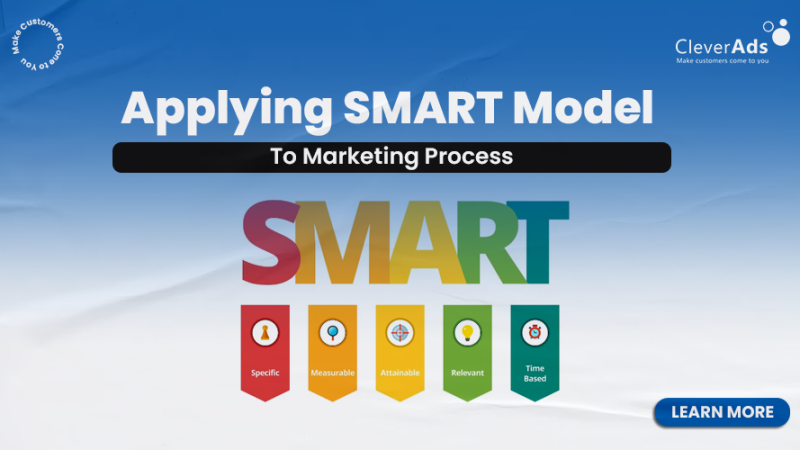Everything about Marketing Objectives you must know

Before you can successfully set goals, you must know what you’re aiming for. Marketing Objectives are a fundamental part of every business’s marketing plan if it wants to stay on track.
Typically, companies that set specific operational goals perform better 90% of the time and can prioritize actions that make a difference.
With the desire to support businesses in the field of Marketing, CleverAds will guide you on precisely what Marketing Objectives are, why they are essential, and how to create your Marketing Objectives in the article below.
1. What are Marketing Objectives?
Marketing goals are measurable goals that outline the results of a marketing strategy. The most effective goals must align with the enterprise’s business plan while complementing the overall business goals.
Marketing goals are tied to the company’s overall success, not just an arbitrary number.
Examples of Marketing Objectives:
A marketing goal might be to increase website traffic by 30%. But how will you get there, and what is the purpose of that traffic? When do you want to get to that number?
Goals not only refer to a specific number but also to how you intend to achieve that number and the impact that result has on the company.
2. Why Marketing Objectives Are Important
A survey of over 3,000 marketers showed that those who set goals were 37.6% more likely to be successful. Indeed, when you set marketing goals, you will put your business on the right track and be able to make decisions consistently based on your company’s best interests.
The Marketing Objectives can help you build the effectiveness of your business. With all employees working towards the same specific goals, your team will function like a complete unit organized in a clear direction.
Goals, therefore, add a higher accountability level to your marketing team. These goals are highly measurable, so they help you create key performance indicators (KPIs) and show whether you’re doing well or need to make changes.
Conversely, digital marketers need to take the time to map out their goals and measure their impact so they can tell if their efforts are having an effect.

3. Key Features of Effective Marketing Objectives
Marketing goals need to follow the SMART philosophy to be effective. This means they must be specific, measurable, achievable, relevant, and time-based.
- Specific
Specific metrics need to be used in the marketing objectives of the business. Don’t just say the company wants to increase sales — say the number you want to improve through sales, either by percentage or by amount.
- Measurable
Goals should be measurable, and businesses should outline how they will measure success. A company’scompany’s goal should be to increase brand awareness and include how it is estimated.
For example: measuring the increase in organic brand searches, social mentions, or followers.
- Achievable
The company may want to increase sales by 200%, but is that goal achievable? Ensure your goals are reasonable and practicable, then outline the steps needed to achieve them.
- Relevant
One of the significant downsides of goals is that they outline the destination rather than how achieving that goal will affect the overall marketing strategy. Goals should align with the general purpose of your business.
- Time-bound
Finally, goals should include a reasonable time frame for achieving the specific plan. Most marketing goals are based on the fiscal year or quarter, but that can vary based on the project and the work required to achieve the goal.
To make it easier to visualize, let’s follow Coca-Cola’s SMART goal for 2012:
EXAMPLE
Specific Coca-Cola is looking to improve the efficiency of its product by a particular amount – 20%. In contrast, goals such as “try your best” are very vague, making it difficult to decide if the goal is achievable. Measurable Beverage efficiency can be calculated so that Coca-Cola can track its progress against its 20% target. If progress is slow, more resources can be devoted to achieving the goal. Aggressive Various studies have determined that performance is most vital when key goals are challenging but achievable. Achieving a 20% improvement will require Coca-Cola to work harder. Realistic If Cola’s product efficiency goal is a 95% improvement, Coca-Cola employees will likely react with surprise and confusion. Achieving the goal must be possible for the employee to grasp it. Unrealistic goals cause most people to give up from the start. And setting goals based on impossible clichés, such as “give 110%”, creates confusion. Time-bound Coca-Cola has set a 2012 deadline for water efficiency. Such deadlines are motivating, and they create accountability.

4. Some Examples of Marketing Objectives
This sounds great, but how do marketing goals work in real life? These examples can inspire and guide you in the process of creating plans:
4.1 Increase sales
If your business is based on selling products or services, you can focus on increasing sales to increase revenue.
Example: The goal is: “Increase sales by 15% over the next six months by increasing new signups by 10% and increasing average customer orders by 20%”.
Then outline how you’ll get there—perhaps by ramping up lead generation content production or email marketing automation to recommend related products.
4.2 Increase brand awareness
If you are a new company or are preparing to launch a new product or service, you are often interested in increasing your brand awareness to increase sales. This goal will be challenging to track without a clear plan.
So your clear business goal is: “Increase market share by improving brand awareness over the next 12 months, as measured by a 50% increase in organic brand search through saturation on social media, social media advertising, and influencer campaigns”.
Note: This goal outlines your plan to increase brand awareness and how you’ll measure it — through rising organic searches for your brand name.
4.3 Increase leads
If you offer an expensive product or are in a B2B market, you will want to increase the number of people who come into your sales process to convert those people over time.
Your specific goal might be to “Grow the number of customers by increasing the number of leads by 25% in the next year through launching two new lead generation channels on the public website.
5. Conclusion
It cannot be denied that defining Marketing Objectives is an essential job for businesses. The company quickly measures the indicators thanks to precise marketing goals, finding the most optimal direction and achieving the highest operational efficiency.
Through the above article, CleverAds hopes to partially equip readers with knowledge about Marketing Objectives so that they can confidently apply marketing goals to the company’s business plan.




